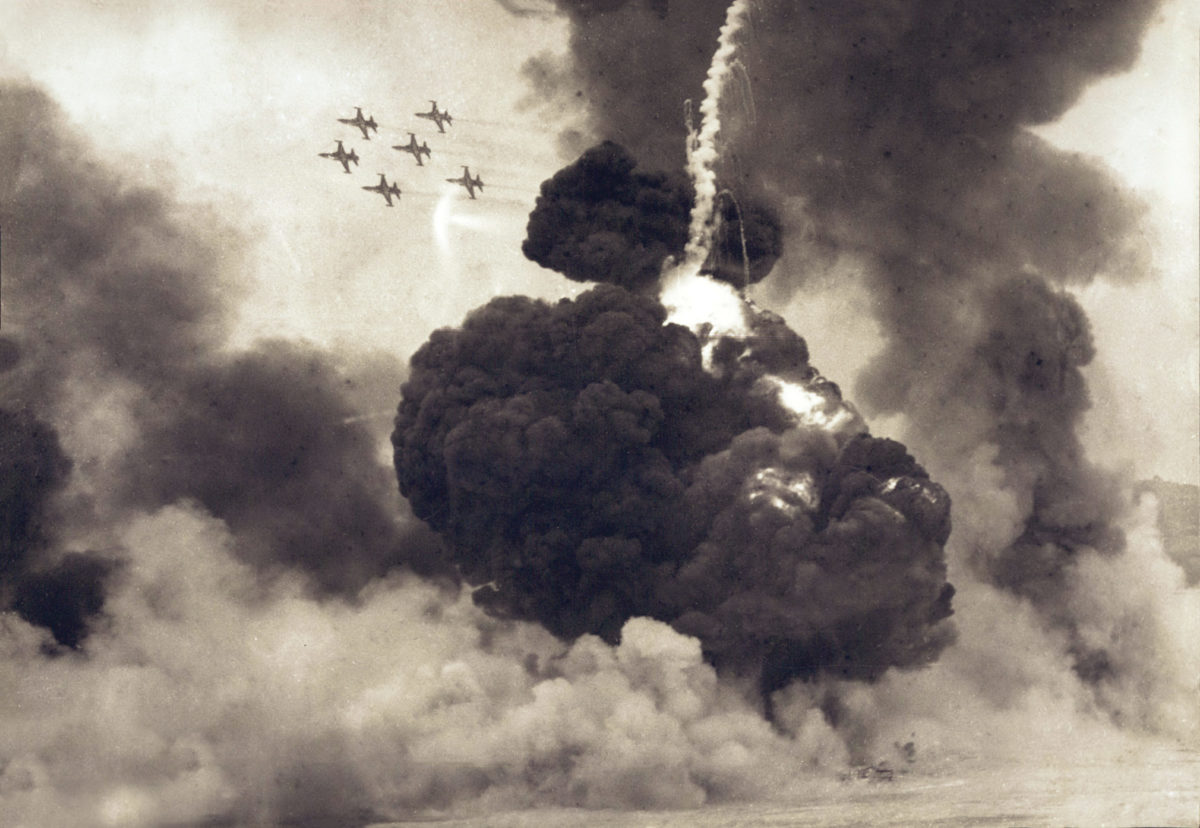On the night of Jan. 17, 1968, 31 commandos from the North Korean Peoples’ Army (KPA) cut holes in the chain-link fence running along the southern edge of the demilitarized zone (DMZ) and crawled past sleeping U.S. soldiers. Their mission was to infiltrate Seoul, the capital of the Republic of Korea (ROK), and kill President Park Chung-hee.
It was the most audacious act the Democratic Peoples’ Republic of Korea (DPRK) had initiated since the 1950 invasion of the ROK. The death of Park was intended to spark a popular uprising and allow communist sympathizers to take control of the government. This endeavor was the defining event of the little-known Second Korean Conflict from November 1966 to December 1969.
Except for the Americans who served in it and the families of 75 military personnel killed in action, details of the assassination attempt and the three-year struggle against North Korean aggression were lost in the turbulence of the 1960s. The Vietnam War relegated U.S. military operations in Korea to a holding action, underfunded by the Department of Defense, downplayed by Washington bureaucrats and out of the sight of the American people.
The Blue House Raid
For South Koreans, the Second Korean Conflict was a war of national survival. It cost the lives of 270 soldiers and 75 civilians. Memories of the fallen, particularly of those who died thwarting the attempt on President Park’s life, are still revered.
Known as the Blue House Raid, this blow came close to fracturing the ROK-U.S. alliance and was a grave embarrassment for the United States.
The Korean Armistice Agreement, signed July 27, 1953, ended three years of fighting that killed thousands of soldiers and civilians. The agreement established a Military Demarcation Line (MDL) with a two-kilometer buffer area, a demilitarized zone (DMZ), on either side. The 151-mile MDL became the de facto border between North and South Korea.
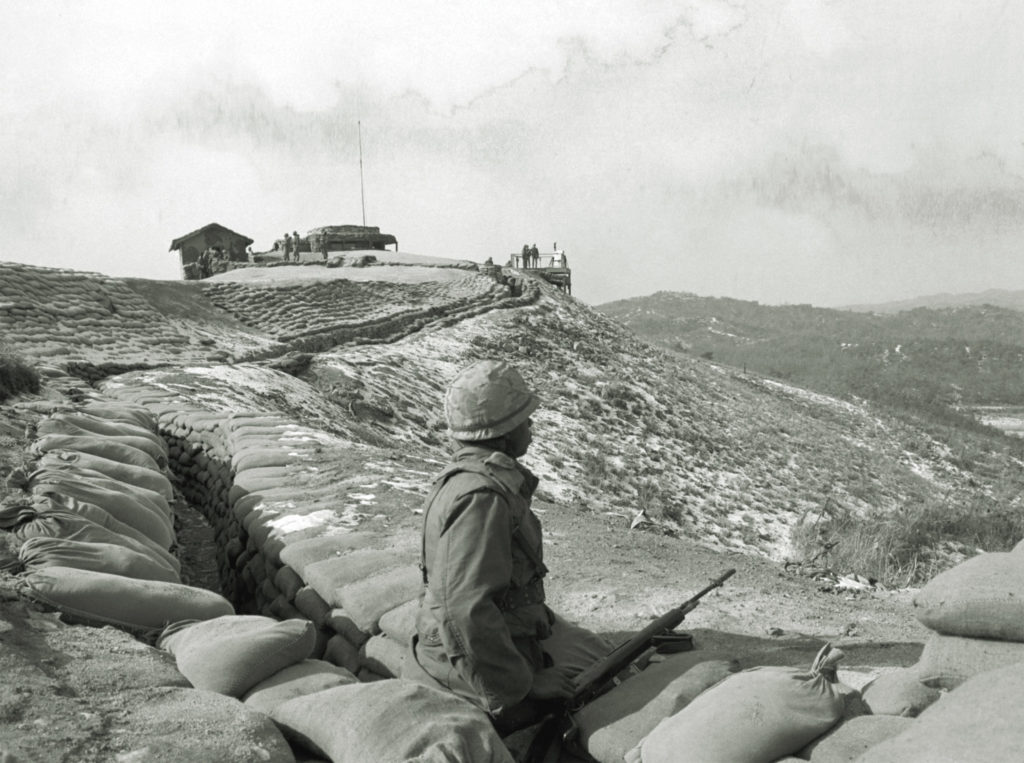
Armistice rules limited the number of troops and types of weapons allowed in the DMZ. The intent was for small constabulary formations to be there. From the outset, the KPA flouted those provisions and built fortified outposts manned by heavily armed troops who regularly fired across the MDL.
In the decade following the armistice, seven G.I.s, 13 ROK soldiers and eight KPA fighters were killed in DMZ-related skirmishes. Authorities in Washington were not overly concerned and attributed the casualties to lingering animosity from the Korean War.
North Korea’s Assassination Plot
North Korean dictator Kim Il-sung was obsessed with uniting the two Koreas under communist rule. By the mid-1960s he faced a formidable opponent. The ROK Army rivaled the KPA in quality and numbers. South Korea’s economy had grown to double the size of its northern adversary. ROK defenses were augmented by 50,000 U.S. troops, including the 2nd and 7th Infantry divisions, whose units were responsible for 18.5 miles of the DMZ. Against such strength, Kim turned to unconventional warfare to destabilize South Korea, initially setting 1968 as the campaign start date.
Kim Il-sung knew hit-and-run engagements would not overwhelm the ROK government. His opponent was an autocratic strongman, President Park Chung-hee, a former general who led a military coup in 1961, had a firm grip on power and used draconian measures to curb opposition. However, during his presidency, quality of life for average citizens vastly improved due to the growing economy. Hence, conditions for a viable insurgency did not exist.
Kim concluded that only Park Chung-hee’s violent death would create a political vacuum and lead to an uprising to ultimately allow him to rule the Korean peninsula. But planning and training for such a dangerous act would take time.World events accelerated Kim’s plans. By late 1966, the United States was immersed in Vietnam where its military commitment exceeded 300,000 and was increasing. For the first time, South Korea diverted forces from homeland defense and sent 50,000 men to assist the U.S. in Southeast Asia.
North Korea’s dictator believed the time was right to strike. The opening salvo of the Second Korean Conflict was fired on Nov. 2, 1966, during President Lyndon B. Johnson’s visit to Seoul. A U.S. Army patrol from the 2nd Infantry Division was ambushed by the KPA. Seven men were killed while one played dead and escaped with multiple wounds. Further east, an ROK squad was surprised by North Koreans and suffered two killed. This was front-page news for a day. Yet once Johnson returned to Washington, Vietnam again dominated U.S. headlines.
Rookies and Mistakes
Gen. Charles H. Bonesteel III, the commander of all United Nations forces in Korea, believed this aggression was part of a new strategy aimed at undermining the ROK government and eroding U.S. will. A Rhodes scholar from West Point’s class of 1931, Bonesteel was a brilliant officer who analyzed Kim’s oratory plus intelligence reports. His options to counter the new threat were limited because most resources, including experienced leaders, new equipment, spare parts and dollars, were earmarked for Vietnam. When he took command on Sept. 1, 1966, his charter from the Secretary of Defense contained explicit instructions not to adversely affect the Vietnam effort.
The theater was in a poor state of readiness. Most helicopters had been sent to Vietnam and modernization plans were on hold. American troops still carried the 7.62mm M14 rifle instead of the lighter M16. Facilities, especially the Quonset huts erected after the Korean War, suffered due to lack of maintenance money for basic repairs or upgrades. Shortages of spare parts left many vehicles non-operational.
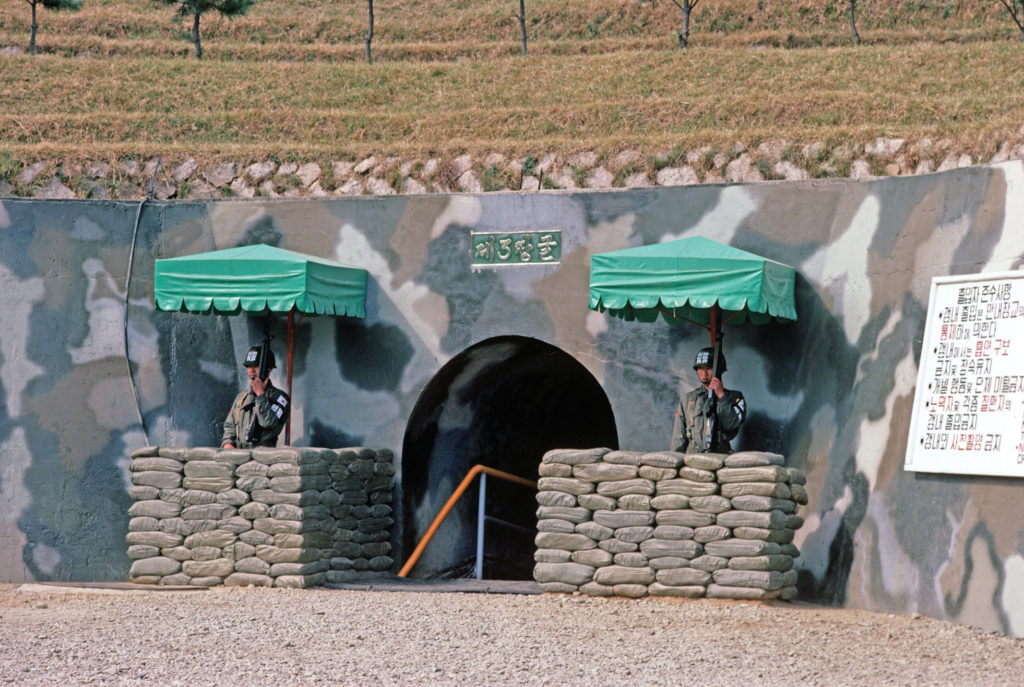
U.S. Army personnel issues exacerbated the logistical problems. To expand the nation’s manpower pool, enlistment and induction standards were lowered, forcing the Selective Service to draft men who should never have been in the armed forces. Lack of experienced leaders had the biggest impact on combat effectiveness. On the DMZ, a single lieutenant colonel and lieutenants manned infantry battalions.
As captains completed their tours in Korea in 1966, they were replaced by second lieutenants. The personnel pipeline had barely enough infantry captains to fill the requisitions for Vietnam and Korea took the shortfall. As a result, young officers on their first assignments were commanding companies—positions normally held by captains. Rookie leaders made mistakes inevitable.
The Infiltrator problem
Clashes with unidentified infiltrators, called UIs, had not abated since President Johnson’s visit. Bonesteel proposed building a barrier and obstacles to impede enemy infiltration, and to enhance surveillance. He emphasized “impede” since no obstacle would stop determined infiltrators. The concept centered on a series of platoon guard posts inside the DMZ and a 10-foot-high chain link fence along the southern trace of the zone. Watchtowers were to be constructed along the fence. Patrols would be increased. Improved bunkers and firing positions would be emplaced so the entire fence was under observation. Sensors, mines and mechanized quick reaction units were part of the mix.
The general ordered two more U.S. infantry battalions to the DMZ, bringing the total to five. But money was required and there was nothing in the budget to cover the $30 million ($274 million today) needed to start the project. The proposal was derided inside the Department of Defense and in the press as “Bonesteel’s Folly.” Yet snide comments did not dissuade the general.
Knowing how to work the bureaucracy, Bonesteel obtained research and development funds for a “DMZ Barrier Test.” He knew if the enterprise started in the U.S. sector, “getting a foot under the tent flap” he called it, the concept could ultimately expand to encompass the entire DMZ.
Construction began in summer 1967. Immediately GIs named it “The Barrier.” While work was in progress, 11 more U.S. soldiers were killed. Exasperated by the shortage of seasoned infantry company commanders, Bonesteel went directly to the Chief of Staff of the Army, Gen. Harold K. Johnson, and asked for 40 infantry captains with Vietnam combat service to fill the void. Johnson was convinced and told the personnel people to make it happen. Captains returning from Vietnam in the summer and fall of 1966 began arriving in Korea in November 1967 as the first stage of the Barrier was completed.
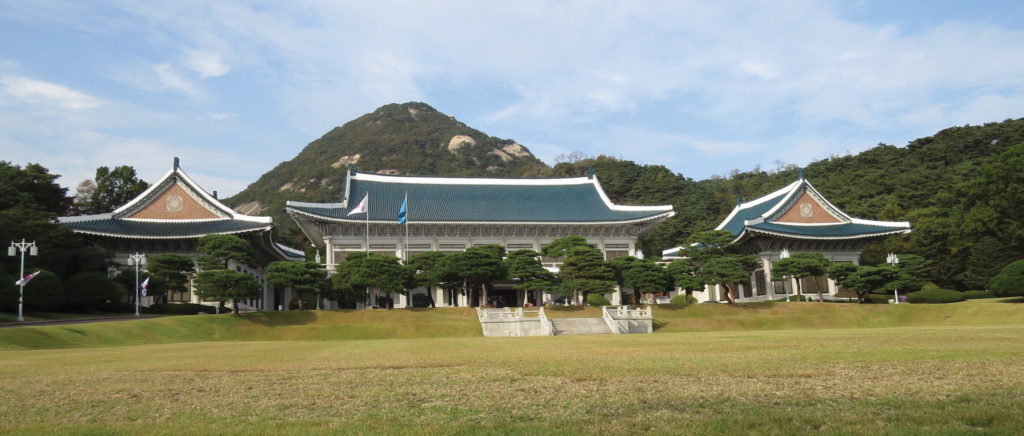
These company commanders were sorely needed. The year 1967 saw a sevenfold increase in firefights, with 150 occurring in the U.S. sector alone. Sixteen GIs were killed and 51 seriously wounded. The ROK Army suffered more grievously with 115 KIA and 243 wounded. Unlike Vietnam, where body counts were liberally estimated, the corpses of 228 North Korean soldiers killed were dragged to central locations for verification.
The Commandos Strike
On Jan. 17, 1968, 31 communist commandos crossed over the border, dramatically changing the tenor of operations. They were headed for the Blue House, South Korea’s presidential residence distinguished by its bright roof tiles. The North Korean general who oversaw their six months of training gave the final briefing, exhorting them to “cut off the head of Park Chung-hee.” Notwithstanding fiery rhetoric, the team’s primary weapon for the assassination was the obsolete Soviet submachine gun, the PPSh-43, instead of the more modern AK-47.
North Korean scouts reconnoitered the route through the DMZ and chose rugged terrain in the eastern portion of the 2nd Infantry Division’s area of responsibility. Their approach to the barrier fence was along brush-covered ground where U.S. soldiers were lackadaisical and rarely checked by leaders.
The GIs from B Company, 2nd Battalion, 38th Infantry were more concerned with staying warm during the sub-zero winter nights than being observant.
Weeks of careful planning paid off. The team was undetected as it moved up to the fence and cut several holes in it, allowing all 31 men to slip through. There was no report the following morning citing the breach. Failure to raise an alarm allowed the infiltrators to cross the partially frozen Imjin River and follow isolated mountain trails to Seoul, located 35 miles away.
Foiled by Woodcutters
The plan unraveled on the afternoon of Jan. 19 when four South Korean woodcutters stumbled on the raiders’ mountain “hide” position. The bewildered woodsmen were held at gunpoint and lectured on the virtues of Kim Il-sung’s communist “utopia,” and then were released with the admonishment to tell no one what they had seen. This was a fatal error. It was also astonishing behavior for ruthless fighters trained to kill without provocation.
The woodcutters immediately went to the police and apprised them there were “many” North Koreans in the mountains. A nationwide alarm was sounded. No one knew President Park was the target. Throughout South Korea, all police and military forces were placed on high alert.
The North Korean team assumed the woodcutters did as they were told and pressed onward, thinking their presence was still secret. In the early evening of Jan. 20, two and three-man cells slipped into Seoul and rendezvoused at a safe house. They were alarmed by the amount of security around government facilities and the number of soldiers and policemen patrolling the streets.
Even though the odds were against them, they decided to continue the mission, posing as a returning patrol and moving to the Blue House.
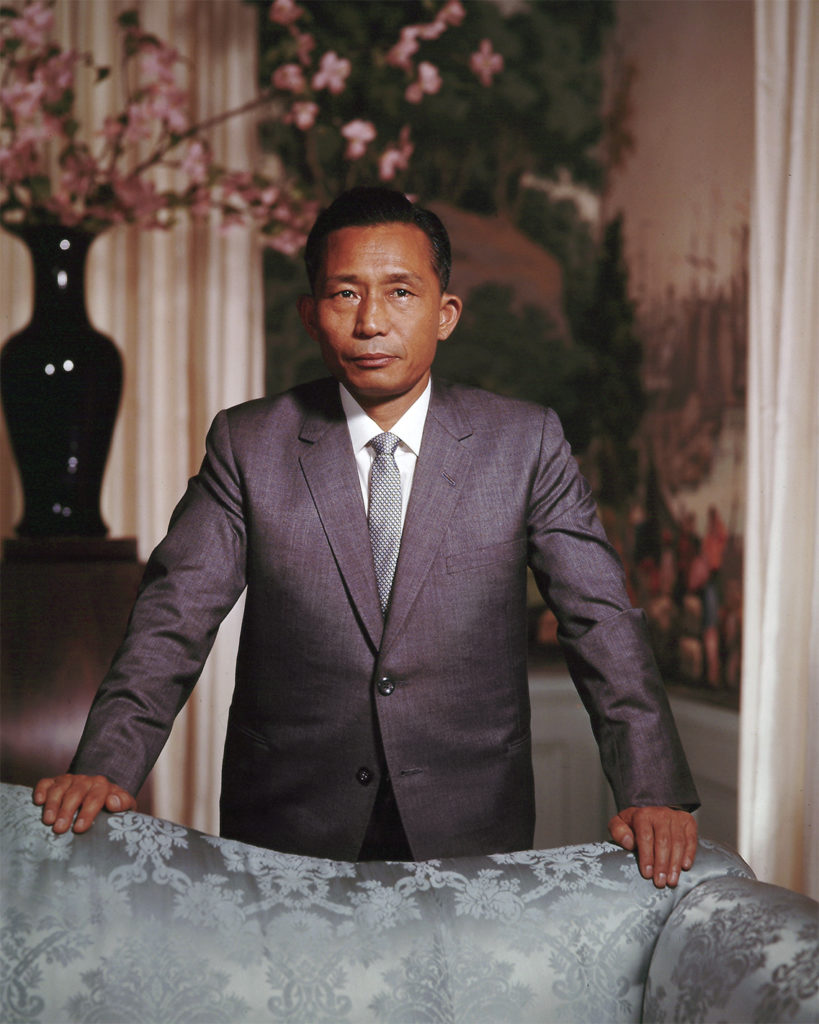
An inquisitive police contingent stopped them at a checkpoint 800 meters from their goal. Their faltering answers to questions were suspicious. The police captain drew his pistol and was killed instantly as a major firefight erupted. The raiders scattered, trying to escape, leaving behind two dead.
Shooting continued throughout the night as the police and soldiers pursed groups of fleeing commandos. Two-dozen innocent civilians caught in crossfire while riding on a municipal bus were among the casualties.
A Diplomatic Crisis
At first light, South Korean and U.S. soldiers began scouring the mountains surrounding the capital. Clerks, cooks and mechanics were formed into provisional platoons on the DMZ to beef up surveillance and stop any escapees.
Within days, 29 raiders were killed, one escaped to North Korea and one was captured. Yet it was a costly victory—68 South Koreans (military, police and civilians) and three Americans were killed. Scores more were wounded.
The captive’s debriefing created a crisis in confidence between the Republic of Korea and the United States. The KPA lieutenant, Kim Shin-jo, was brought to the DMZ where he identified the exact location they cut the Barrier fence.
Not only had the guards been sleeping, but the chain-link fence was crudely repaired, indicating that the holes had been discovered and someone had tried to cover them up. If leaders had checked their men and the fence in accord with the division’s standard operating procedure, this would not have happened.
South Korean officials were infuriated by this dereliction of duty and threatened to withdraw Korean forces from Vietnam, claiming U.S. soldiers were incapable of defending Korea.
News of the fiasco spread through the 2nd Infantry Division. Retired Col. William A. “Bud” Henry, then a captain and a company commander in an adjacent infantry battalion, recalled: “It was a terrible screw-up…bad enough troops were sleeping on duty but far worse when they found the holes in the fence, fixed them and did not report it. The troops pretended nothing happened and probably hoped the whole thing would go away…We assumed somebody was going to jail over it.”
The Tet Offensive
One bad thing followed another. On Jan. 23, as details about the Blue House Raid were being sorted, North Korea’snavy seized the USS Pueblo, an intelligence ship sailing in the Sea of Japan. One U.S. sailor was killed and 82 crewmen were taken hostage. No one in South Korea knew of the ship’s presence,negating the possibility of mounting a rescue. Again the United States appeared impotent and incompetent.
A week later, the Tet Offensive engulfed Vietnam. On Jan. 30-31, nationwide attacks struck 42 cities and the U.S. Embassy in Saigon. The allies quickly gained the upper hand, but fighting in the ancient capital of Hue dragged on for a month. American TV audiences were saturated with combat footage. Tet was a watershed event because the military success blunting the war’s largest offensive failed to dampen negative political fallout. Previous supporters of the war now viewed it as unwinnable.
To Park Chung-hee and his generals, the Tet Offensive was a sideshow. They deemed the Blue House Raid and the Pueblo hijacking as acts of war and the lack of American retaliation as inexcusable. Their inflammatory statements denigrating the United States brought the relationship between the countries to a new low.
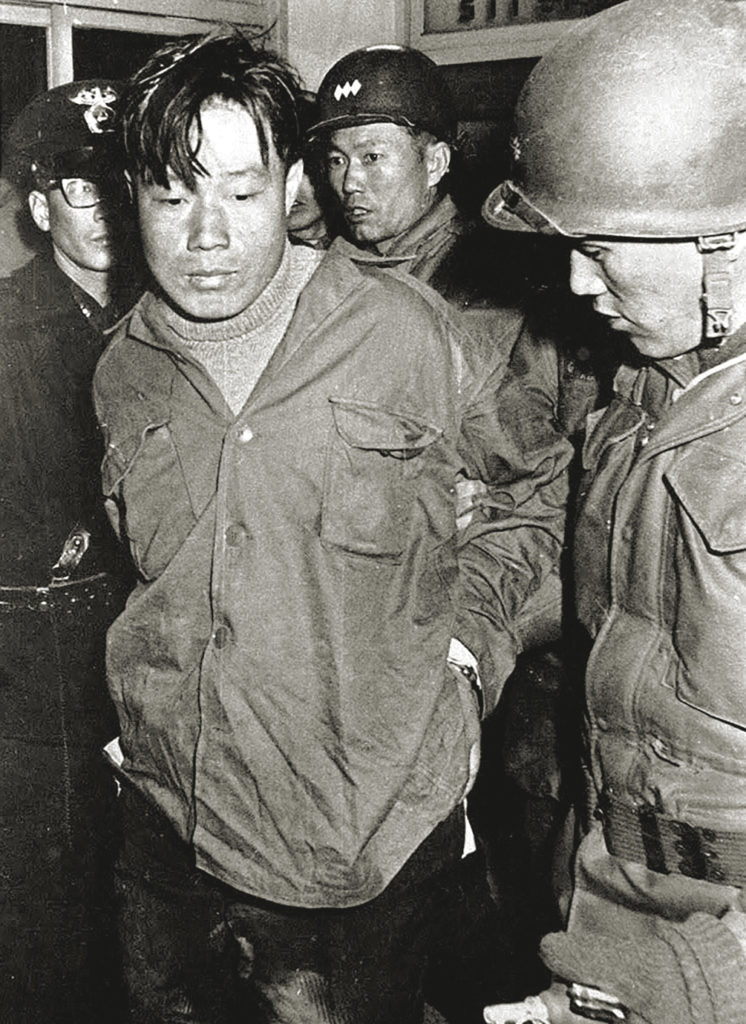
Johnson had his hands full in Vietnam and was in no position to start another war with North Korea. He sent his personal emissary, Cyrus Vance, to placate Park with a $100M military aid package ($850M in today’s dollars). Showing his disdain, Park initially refused to see Vance but ultimately relented. After several days of contentious discussions, relations between the two countries were patched up. Yet the alliance remained badly frayed.
Tet and the Pueblo diverted the attention of journalists who might have dug into rumors of a DMZ cover-up and published the story in New York Times headlines. Yet the current big story was in Vietnam. Talk of the DMZ breach died a natural death and U.S. authorities were glad to see potential scrutiny go away.
There were no reliefs or courts-martial in the 2nd Infantry Division. Bonesteel used transfers and tour curtailments to hasten the departure of weak officers in the 2nd Battalion. He believed the acrimony between the United States and the Republic of Korea did not need further incitement by airing more dirty laundry with public punishments. Soon there were new leaders in the battalion and the cover-up was not mentioned in official postmortems.
Shows of Force
Kim Il-sung suffered no consequences for his actions. Emboldened, he stepped up pressure on South Korea. On April 21, an outnumbered U.S. patrol fought 50 North Koreans. Five KPA soldiers were killed while the U.S. sustained one KIA and three wounded. It was one of 236 DMZ firefights in 1968 that resulted in 17 more Americans and 145 South Korean soldiers killed. Yet momentum had shifted in favor of the allies; 321 KPA fighters were killed and all enemy forays across the MDL were repelled.
Despite failures, North Korea’s dictator would not give up. Now he faced a new U.S. president, Richard M. Nixon, who ordered fighter aircraft and a large contingent from the 82nd Airborne Division to South Korea for a March 1969 joint training exercise. This show of the alliance’s strength unsettled Kim, who believed it was a precursor to an all-out invasion of North Korea.
He rolled the dice one more time with a premeditated attack on the United States. On April 15, Kim Il-sung’s birthday, two MiG-21 fighters shot down a U.S. Navy intelligence aircraft 95 miles off the coast of the DPRK. Thirty-one U.S. servicemen died.
President Nixon was irate but opted for a show of force versus bombing North Korea. He immediately resumed intelligence flights but they were escorted by heavily armed jet fighters. Nixon ordered a naval task force of two carrier battle groups into the Sea of Japan. Kim declined to test his enemy further.
In fall 1969, the communist dictator ordered a decrease in offensive activity and purged KPA leadership. Failure had dire consequences in Kim’s hermit kingdom. Many high-ranking military officers were executed or condemned to life in prison.
The general who planned the Blue House Raid was the first to face torture and the firing squad. At the time, no one realized United Nations troops had defeated the DPRK’s unconventional warfare campaign…except Kim Il-sung.
The Blue House Raid and that period of violence are described in Maj. Daniel Bolger’s 1991 study, “Scenes from an Unfinished War: Low Intensity Conflict in Korea, 1966-1969.” Even in his account, there is no mention of deception on the DMZ. Misguided efforts of a few U.S. soldiers were swept away, overshadowed by the Pueblo and 3600 Americans killed during the Tet Offensive. In his summary, Bolger stated, “the Second Korean Conflict has drifted into obscurity, a curious episode, a footnote to the Vietnam era.”

